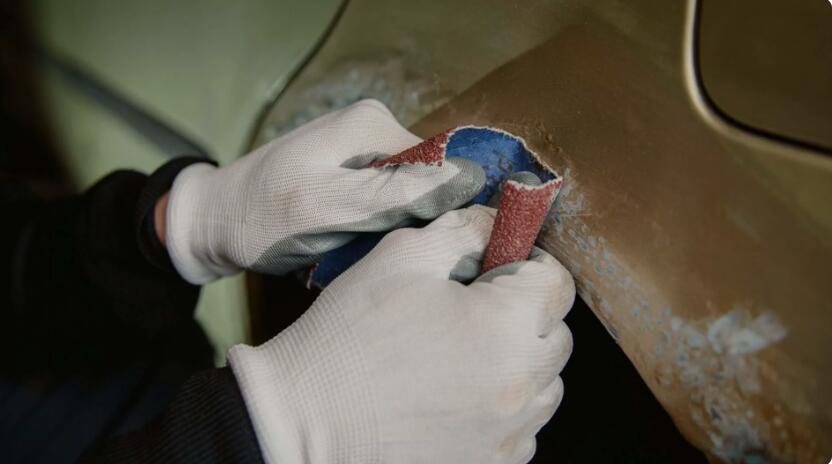When Sandpaper Smooths A Piece Of Wood?
When Sandpaper Is Used to Smooth a Piece of Wood, It Gradually Removes Small Amounts of Material From the Surface. The Abrasive Particles on the Sandpaper Scratch the Wood Fibers, Wearing Them Down and Creating a Smoother Surface. As the Sandpaper Is Moved Back and Forth Across the Wood, It Progressively Smooths Out Any Roughness, Unevenness, or Imperfections.

Here Is a General Process of Sanding Wood Using Sandpaper:
-
Prepare The Surface: Begin by Ensuring the Wood Is Clean and Free From Any Loose Debris or Finish. If Necessary, Use a Brush or Damp Cloth to Wipe Away Dust or Dirt.
-
Select The Appropriate Sandpaper: Different Levels of Roughness Are Available for Sandpaper, Known as Grits. For Initial Sanding, Start With a Coarser Grit (Lower Number) to Remove Larger Imperfections, and Gradually Progress to Finer Grits (Higher Numbers) for a Smoother Finish.
-
Sand With The Grain: Always Sand Along the Grain of the Wood, Following the Natural Direction of the Wood Fibers. This Helps Prevent Scratches and Results in a Better Overall Finish.
-
Apply Even Pressure: Hold the Sandpaper Firmly, Applying Even Pressure While Moving It Back and Forth Over the Wood Surface. Avoid Pressing Too Hard, as It May Cause Uneven Sanding or Damage the Wood.
-
Check Your Progress: Periodically Stop Sanding to Inspect the Wood and Assess How Much Material Has Been Removed. This Will Help Determine If You Need to Continue with the Current Grit or Switch to a Finer Grit for Further Refinement.
-
Change Grits Progressively: As You Progress, Switch to Higher Grits of Sandpaper to Achieve a Smoother Surface. Start with a Coarse Grit and Work Your Way Up to Medium and Then Fine Grits.
-
Sand The Edges And Corners: For Consistent Results, Sand the Edges and Corners of the Wood Piece Using Folded Sandpaper or a Sanding Block to Prevent Rounding Them Off.
-
Wipe Away Dust: After Each Sanding Step or Before Applying Any Finish, Use a Clean, Dry Cloth or a Tack Cloth to Remove the Dust Generated by Sanding. This Ensures a Clean Surface for Further Steps.
Remember, Proper Sanding Technique and Patience Are Key to Achieving a Smooth Finish on Wood Surfaces.
Continue Reading


